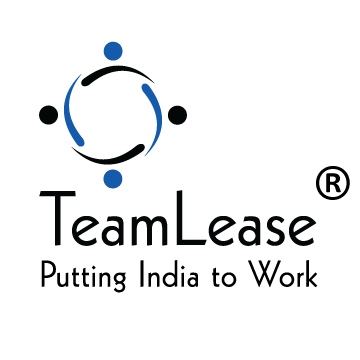Working With a Multigenerational Workforce: Benefits and Challenges

With the world of work evolving at lightning speed, one of the most significant dynamics at play is the coexistence of a multigenerational manpower. From Baby Boomers to Gen Z, each cohort brings its unique perspectives, work styles, and expectations to the table. This multigenerational workforce presents both opportunities and challenges for organisations striving to maximise productivity and foster a harmonious work environment.
As life expectancy rises and retirement becomes more flexible, it is now common for organisations to have employees working side-by-side who represent three to four generations. However, each generation has varied work habits, expectations, and communication styles, making dealing with people from different age groups often challenging.
So, what strategies can your organisation use to reap the benefits of a multigenerational workers? Let’s start by examining the composition of today’s workforce:
Baby Boomers: This generation is known for its strong work ethic and dedication to hierarchical structures.
Generation X: Gen X holds a reservoir of experiential knowledge. Their tenure in a pre-AI professional landscape equips them with critical thinking and problem-solving skills that are unique and complementary to AI’s capabilities.
Generation Y or the Millenials (Digital Natives): The oldest Gen Ys are in their late 30s—fewer years separate today and their retirement than when they began high school. They’re slaying the hustle culture, the phrase prescribed to millennials who burned themselves out climbing the corporate ladder or trying to launch their own business in a post-recession era.
Or, at least, that’s what some people think.
Generation Z (Zoomers): The emerging generation that we’re still trying to understand isn’t the Millennials anymore. It’s Generation Z—individuals born after the mid-1990s. The World Economic Forum report tells a different story: this under-25 demographic will account for more than a quarter of the workforce by 2025, a workforce that is becoming increasingly infused with AI usage.
GenZs and millennials—both generations grew up with changing technology—share similarities in their perceptions of the ideal size of a high-performing portfolio and the factors to consider—or overlook—when contemplating a career path. These younger generations have grown up with changing technology, making them particularly adept at navigating the digital landscape.
Benefits of a multigenerational workforce
Each workforce from a different generation has a unique perspective shaped by their experiences, upbringing, and cultural influences; they bring varied work habits, expectations, and communication styles to the table. Thus, there are a lot of possibilities of beneficial perks from having a multigenerational workforce.
- Diverse perspectives: A mix of generations encourages diverse thinking and problem-solving approaches, leading to more creative and innovative solutions.
- Knowledge sharing: Older generations often possess valuable institutional knowledge and expertise gained through years of experience.
- Technological fluency and innovation: Younger generations are more adept at leveraging technology, digital tools, and platforms. They can help older colleagues navigate new technologies and drive innovation within the organisation.
- Enhanced communication skills: Encouraging interaction among employees of different age groups can improve communication skills across the organisation, leading to better collaboration and teamwork.
- Employee engagement and retention: A diverse workforce that values inclusivity and respects different perspectives tends to foster a sense of belonging among employees. This can lead to higher engagement and job satisfaction, ultimately improving employee retention rates.
- Adaptability and resilience: Different generations bring unique strengths and coping mechanisms, enabling the organisation to navigate challenges more effectively.
- Succession planning and leadership development: Organisations can develop a pipeline of future leaders from diverse ages. This helps ensure continuity and sustainability within the organisation, even as older employees retire or transition to new roles.
Challenges of a multigenerational workforce
Managing a multigenerational manpower poses several challenges due to the diverse perspectives, values, work styles, and communication preferences among employees of different age groups. Below are several of the main challenges:
- Communication gap: Each generation’s preference for different communication methods creates a gap.
- Work preferences: Balancing different generations’ attitudes toward work preferences can be challenging for managers.
- Technology adaptation: Younger generations are tech-savvy, while older workers may struggle to adapt to new technologies.
- Conflict resolution: Misunderstandings, stereotypes, and biases based on age can arise and hinder teamwork and collaboration.
- Leadership styles: Different generations may have different expectations of leadership and management.
- Knowledge transfer and succession planning: As older workers retire, effective knowledge transfer to younger generations is fundamental for maintaining organisational functions.
- Retention: Understanding and catering to employees’ diverse needs and preferences across different age groups is essential for retaining top talent.
Bridging the generational divide
To address the evolving needs of a multigenerational manpower and leverage the unique strengths each generation brings, organisations can implement several strategies:
- Skill-based hiring: Prioritise hiring based on skills, competencies, and potential contributions rather than just educational credentials or experience. Consider consultants or contract staffing for temporary specialised skills and expertise.
- Effective communication: Implement communication strategies that cater to diverse generational preferences. Effective communication reduces attrition by fostering employees’ sense of belonging and engagement.
- Adaptable training programs: Provide diverse training opportunities tailored to various learning styles and skill levels. Offer both traditional classroom and online modules, along with on-the-job experiences.
- Cross-generational mentoring: Encourage cross-generational mentorship for knowledge exchange and skill development.
- Embrace diversity and inclusion: Foster an inclusive environment where all generations feel valued and empowered to share their unique perspectives.
- Agile talent management: Adopt agile talent management to swiftly adapt to changing workforce needs. This may include hiring consultants or using contract staffing to fill temporary skill gaps and workload fluctuations.
Flexibility in work arrangements: Recognising the importance of work-life balance, offer flexible arrangements to accommodate diverse generational needs. This promotes satisfaction, reduces attrition, and enhances employee well-being.
Temporary teams comprising contract workers are vital for today’s agile workforce model. Focused on outcomes, they bring together diverse skills and backgrounds, enabling success in person or remotely. Professional staffing firms have been building teams from various yet curated talent pools for a while now with great success.
Conclusion
Working with a multigenerational manpower offers both opportunities and challenges. Organisations must prioritise skill-based hiring, effective communication, and adaptable training to meet market needs. Embracing diversity and inclusivity, fostering cross-generational collaboration, and emphasising continuous learning enable sustainable growth in the age of AI and digital transformation. Addressing communication gaps and work preferences is crucial, and solutions like cross-generational mentoring and hiring consultants help bridge generational divides for resilient, future-ready workplaces.
Let’s collaborate to bridge generational divides, foster innovation, and drive sustainable growth. Connect with us to explore tailored strategies and experienced professionals who can elevate your workforce to new heights. CONTACT US
Latest Blogs
New Labour Code: A Workforce Wake-Up Call for India
For years, India’s labour ecosystem resembled a dusty filing closet, layered, confusing and waiting for someone brave enough to open it. The arrival of the...
Read More4 New Labour Codes: How Workers and Employers Benefit
Reforms shape the future only when they simplify the present. India’s new Labour Codes stand out as one of the most meaningful updates to the...
Read MoreEmployer of Record (EOR) Services: Hire in India
According to the International Monetary Fund (IMF), India remains the only major economy projected to grow above 6% in FY 2025, with a forecasted GDP...
Read MoreRPO vs Contract Staffing: Choosing the Right Talent Model
The Talent Dilemma: Balancing Long-Term and Short-Term Hiring Needs Priya, the HR Head of a fast-scaling Indian startup, faced a familiar challenge. Her company was...
Read MoreWhat Are the 3 New EPFO Withdrawal Rules? Explained Clearly
Social security isn’t about saving for retirement; it’s about staying secure through every stage of work.” The Employees’ Provident Fund Organisation (EPFO) has revamped its...
Read More





